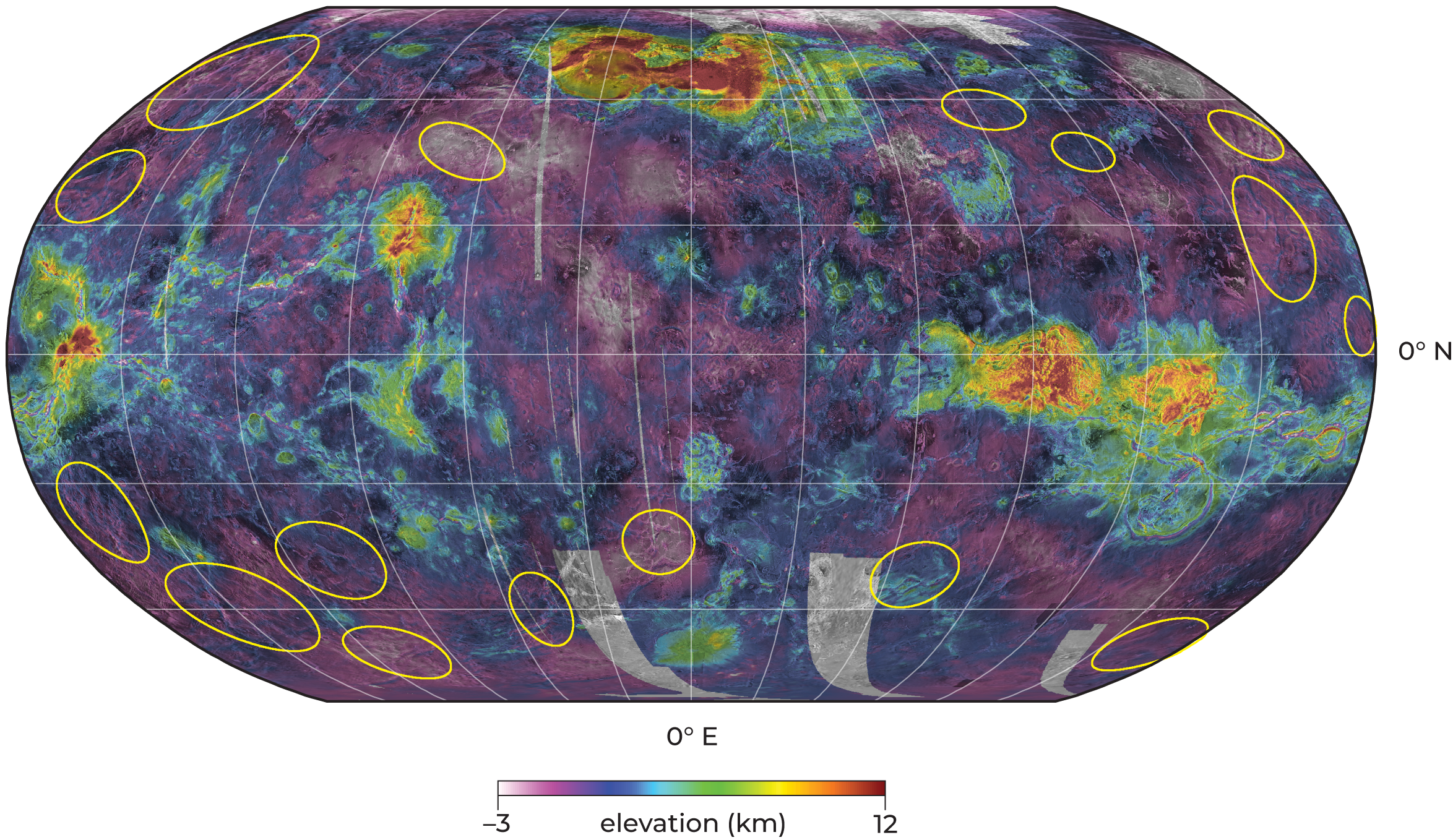
It's been more than 20 years since scientists got a good look at the surface of Venus, but revisiting old data still has plenty to offer. For example, new research finds that its surface isn't as static as scientists had thought.
Our neighboring planet doesn't have full-fledged plate tectonics like we have here on Earth, but that decades-old glimpse shows clear evidence of a similar process at play.
That's not to say we've cracked all of Venus's mysteries, of course. "We just don't have the tools we need to understand the planet," Paul Byrne, a planetary geologist at North Carolina State University who is leading the research, told Newsweek. "It is a criminally underexplored world." The last spacecraft to send back information about the surface of Venus, which requires expensive radar gear that can see through the planet's deadly atmosphere, ended its work in 1994.
Byrne and his collaborators used that Magellan data to take a better look at the pattern of wrinkles on the planet's surface. By looking at the whole surface, rather than zooming in on tiny portions, they realized that those marks isolated small chunks of Venus's surface—in a way that looked eerily similar to the scientists, since Earth also displays some small chunks of crust surrounded by similar signs of wear and tear. The team presented their research at last week's annual conference of the American Geophysical Union.
But the comparison only goes so far. "It's a bit like the first part of plate tectonics on Earth," Byrne said, in which large blocks of rock move about the planet's surface. But on Earth, that's driven by a giant geologic recycling system, in which new crust is created at rifts in the bottom of the ocean and old crust is sucked back into the planet to be slowly melted back down. That's the bit that's missing on Venus.
"We are very clearly not finding Earth-style plate tectonics on Venus," Byrne said. But the results could point to a sort of intermediate phenomenon, one that falls short of plate tectonics but still shows more movement than the surface of Mars or the Moon, each of which displays what scientists call a stagnant lid, in which the surface is all one piece of rock. "Stuff has definitely been mobile in the relatively recent past on Venus."
Byrne and his colleagues aren't quite sure yet what's causing the rock to move, but they think a key piece of the puzzle may be Venus's toasty surface. "It's basically a self-cleaning oven," Byrne says of the planet, which can top 880 degrees Fahrenheit at its surface. That means that unlike on cold places, like the Moon and Mars, you don't have to go too deep below the brittle surface to get rock that's a little soft and pliable, like chocolate left out on a hot day.
Weirdly, the moving chunks of rock on Venus's surface are about the same size as microplates, the smallest type of plate found on Earth's surface. "This may be a coincidence, or this may be telling us something," Byrne said.
Whatever has caused the phenomenon on Venus, it's worth pinning down, Byrne said. That's because whatever we learn there could be applicable to distant planets. We're particularly interested in planets that are about Earth's size and located about as far away as we are from the sun, since those could be a good place to look for life. But while Venus superficially meets those criteria, it's a nightmarish planet we could never visit. "Why is it our sister planet but not our twin planet?" Byrne asks. Whatever we can learn about the surface and its history could help us answer that question.
Uncommon Knowledge
Newsweek is committed to challenging conventional wisdom and finding connections in the search for common ground.
Newsweek is committed to challenging conventional wisdom and finding connections in the search for common ground.
About the writer
Meghan Bartels is a science journalist based in New York City who covers the science happening on the surface of ... Read more
To read how Newsweek uses AI as a newsroom tool, Click here.








